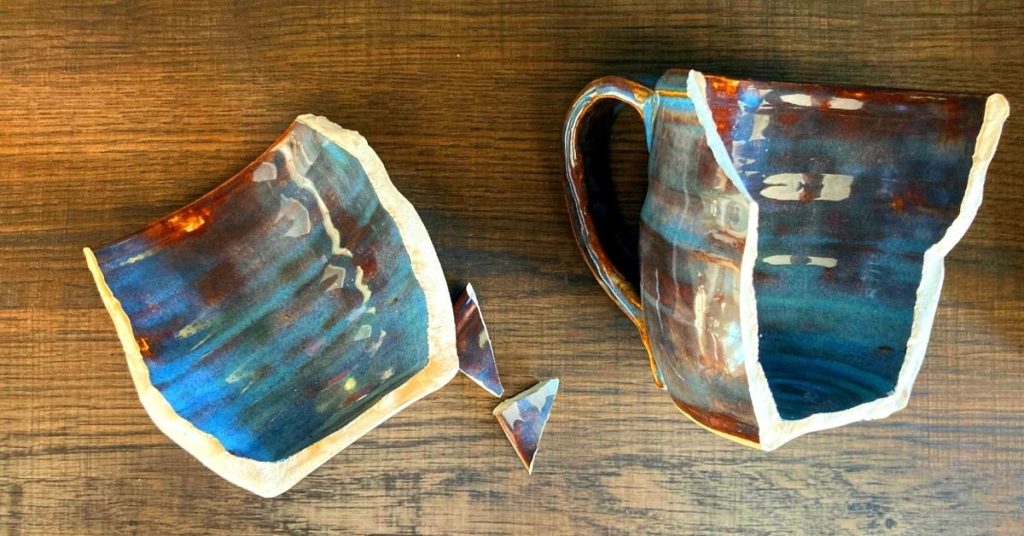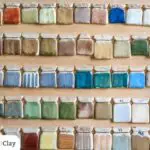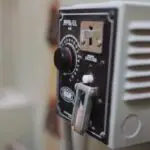My guess is you’re here because a ceramic project you painstakingly put together cracked.
I’m so sorry!
Cracked clay happens to everyone, even the most experienced expert potter. In this article, we’ll cover the 6 main causes of clay cracking and the steps you can take to prevent clay cracking in the future.
But first, what causes ceramic cracks?
What causes clay cracking?
There are 6 main causes of clay cracking. They are:
- Not properly wedging clay
- Unevening drying clay
- Unevening wall thickness
- Type of clay and its plasticity
- Inconsistent kiln firing
- Poorly joined joints
1. Not properly wedging clay
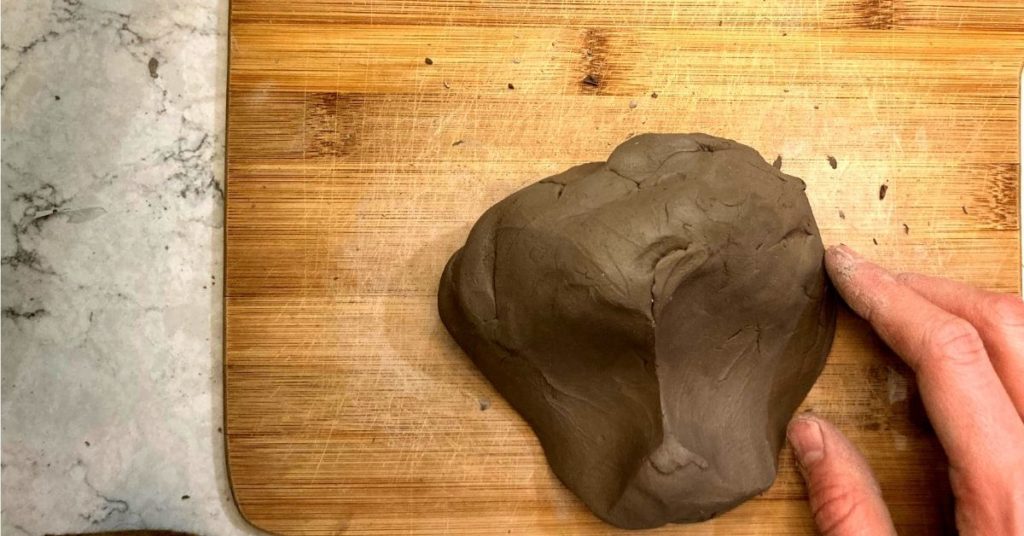
Wedging clay is the process of preparing clay by making it malleable, distributing moisture evenly, and removing air bubbles. Basically, you’re kneading the clay.
You may have heard that air bubbles in your clay can lead to a disaster in the kiln. Air bubbles build up in clay that sits dormant. Wedging is one of the best ways to remove air bubbles. The wedging process also softens the clay making it easier to work with. Wedging helps clay particles bond. Bonded particles mean your clay is less likely to crack during firing.
Click the following link to learn the different ways to wedge clay.
2. Uneven drying clay can cause cracking
One crucial (and boring) stage of making pottery is letting your works dry. But you can’t sleep on it!
Plastic clay is a lot of water. It’s typically made up of 20% water. A piece needs to become bone dry between the plastic and firing stages of clay. During the drying process, pottery shrinks.
If the pottery dries in one section quicker than another, it also shrinks in that section more quickly than the other. This imbalance results in stress on the ceramic body.
Stress often equals pottery cracking while drying. Another part of drying to consider is the surface versus the internal layers. The part of your clay exposed to the air will dry more quickly than the internal layers. A large piece cracks more often because internal and external clay layers dry at different rates.
Good news: We can prevent it by adding small amounts of water to the fast drying areas with a spray bottle. This keeps the clay piece drying evenly. I would also recommend draping plastic bags over the pieces while drying. The plastic bag will prevent airflow from an air conditioner or fans from drying one side or area of the pot.
3. Uneven wall thickness can cause clay cracking
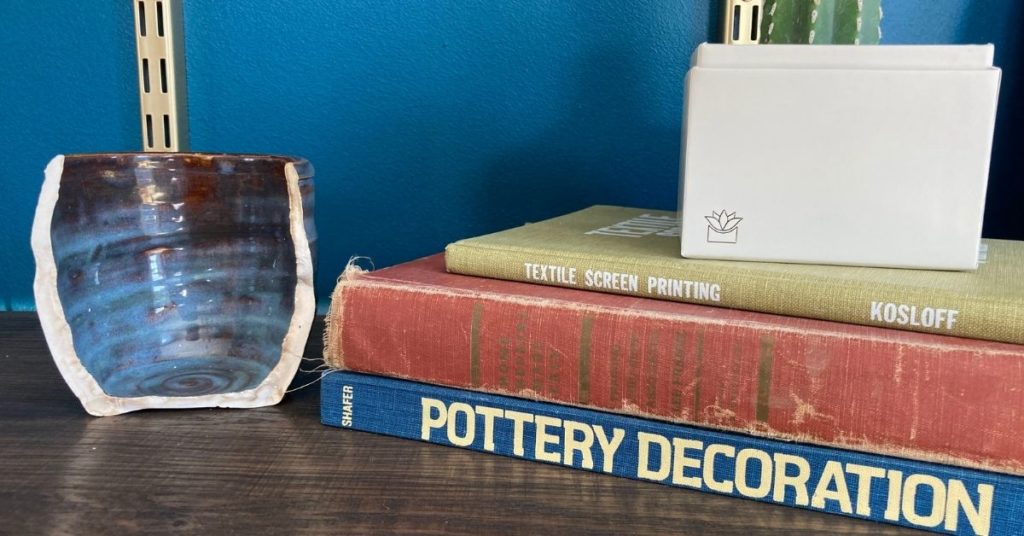
Uneven wall thickness can result in cracks in the same way that uneven drying results in cracks. When clay is drying, moisture comes to the surface before evaporating. When wall thickness is uneven, the moisture leaves the clay body at variable times which shrinks the surface area at variable times. The drying imbalance results in stress on the ceramic body. Stress often equals pottery cracks or breaks.
So the fix here is to make sure the walls of your pot (whether thrown on the wheel or built by hand) are within an acceptable range of thickness.
4. Type of clay and its plasticity can cause pottery cracks
Different material leads to different results. For instance, Porcelain is more likely to crack because of its water retention. Higher water content leads to more shrinkage during the drying and firing process. Stress on a clay body is the first step to disaster.
Also, the more plastic the clay, the more likely it is to crack.
Plastic is a fancy word that means clay can be shaped and formed by hand. Plasticity is a result of water in the clay. A plastic clay body will shrink more during drying and firing as the water evaporates. Any contraction or expansion to a clay vessel adds stress and (again) stress can lead to small cracks.
5. Inconsistent kiln firing
Another main reason for cracked pottery is inconsistent firing. The more you can control the firing process the better. Unfortunately, that normally means buying or finding a high-quality (AKA expensive) kiln.
There are a lot of different types of kilns. The atmosphere options for kilns are oxidation or reduction. And then there’s a long list of kiln types: gas kilns, electric kilns, wood kilns, oils kilns, salt kilns, or soda kilns.
Bottom line: Find a quality kiln to ensure cracking doesn’t happen to your pieces.
6. Poorly joined joints
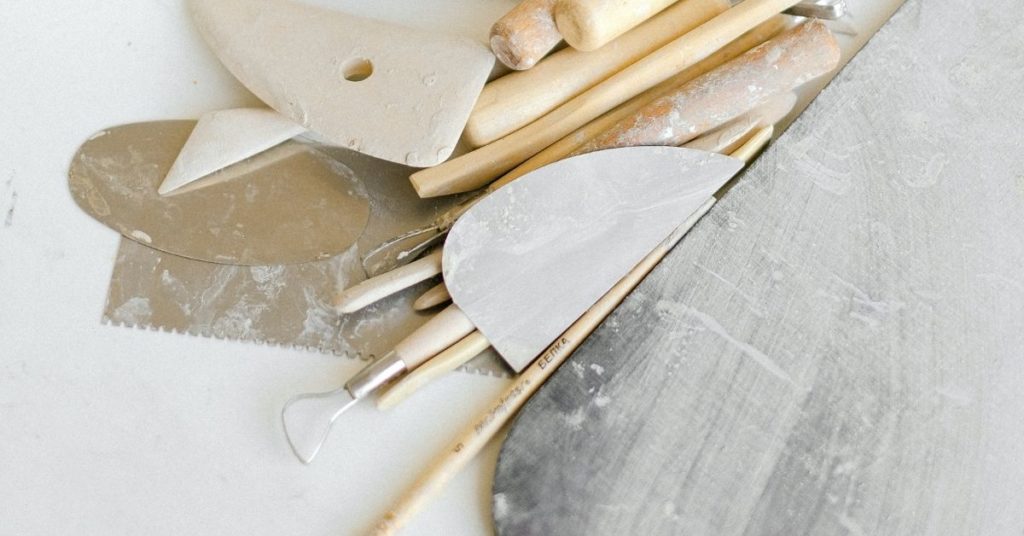
A joint is a known weak point in a clay vessel. With poorly joined pottery, a pot can crack at the point of the joint or come apart entirely during firing. One way to join clay pieces together is called slip and score. A potter would scratches marks on the surface of the clay (or score it). The potter then applies a liquid mixture of clay in water (slip) to the scored area.
If done properly, slip and score will functionally join the pieces.
How do you keep pottery from cracking?
The steps to ensure your pottery doesn’t crack are in how you prepare. Wedging clay is of course a good idea. It properly removes air bubbles and returns the clay to a plastic stage. And being diligent about how your pottery drys is a safeguard against cracked pottery.
You can learn more about wedging clay at this link.
Another way of preventing cracks is by reinforcing the clay with grog. Grog is a material that can reduce shrinkage during drying and firing.
Conclusion
Cracking clay is a really disappointing outcome. Now that you know the common causes of broken pottery, I hope you are able to avoid major upsets in the future! But be encouraged: Even the most capable ceramic artists get big cracks in their projects sometimes. So whether it’s your first time or your millionth time, it’s all part of the process.
If you learned anything new or stories of your clay cracking, please share!

